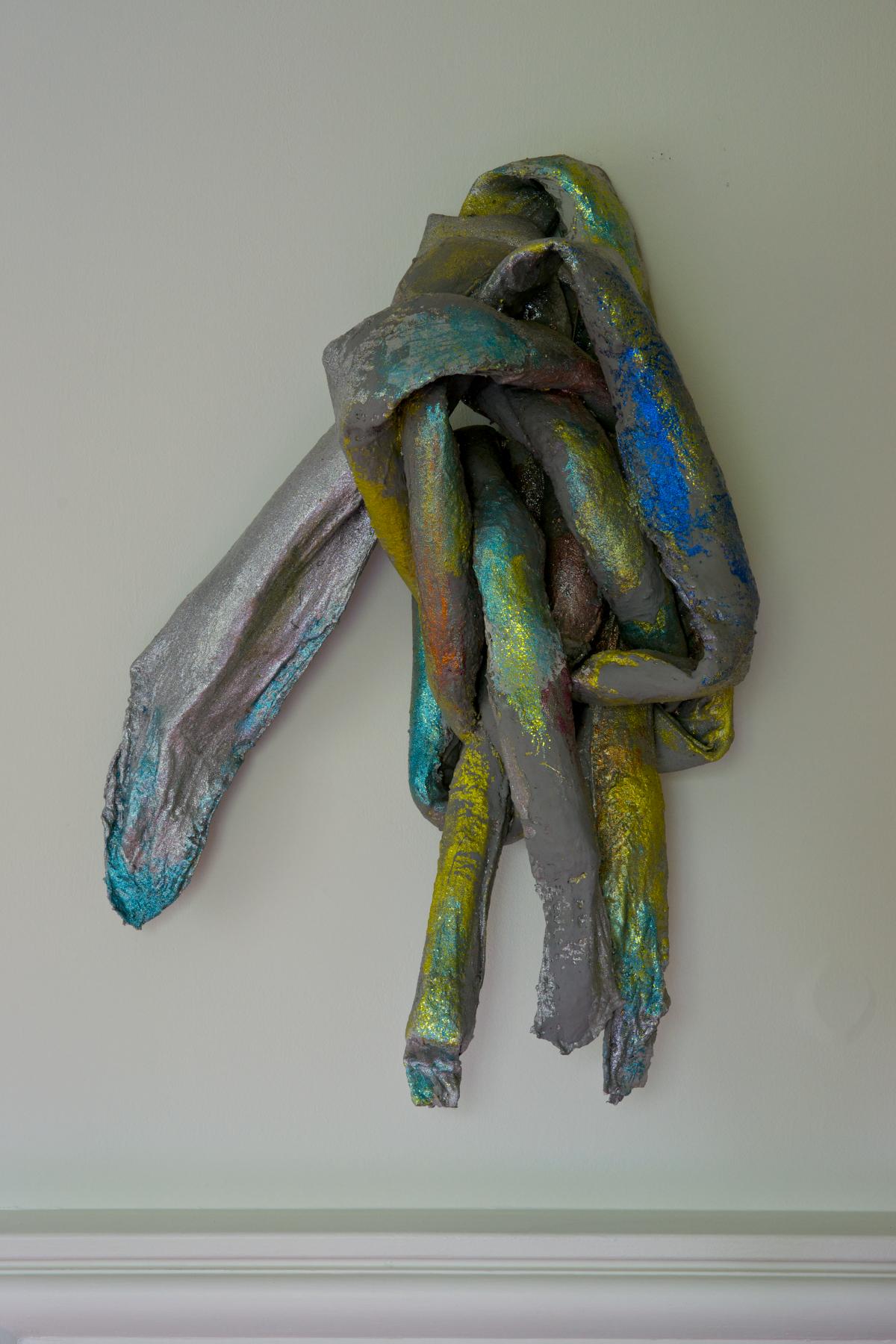Off view

American, b. 1941
Nu, 1974
Aluminum screen, Cheesecloth, plaster, metal, paint, and sparkle
43 1/2 x 29 x 15 in. (110.5 x 73.7 x 38.1 cm)
Gift of the Ralph E. Ogden Foundation
© 2021 Lynda Benglis / Licensed by VAGA at Artists Rights Society (ARS), NY
Photo by Jerry L. Thompson
Benglis first gained notice in the late 1960s with her gestural works made of poured latex and foam. Her practice did not fit neatly within the sharp aesthetics of Minimalism or the overt politics of the feminist art of the time. Across her career, Benglis has employed a wide range of materials—from plastics and cast glass to paper and gold leaf—to render dynamic impressions of mass and surface that blur the distinction between hard and soft, flaccid and firm. Exemplifying this tendency is Nu, a sparkling, knotted sculpture that drapes off the wall; made in 1974, it marks the artist’s transition to working with metal. In her multifaceted practice, Benglis mines both the human body and the natural environment as primary references for her sculptures, which possess a striking sense of immediacy and physicality.

